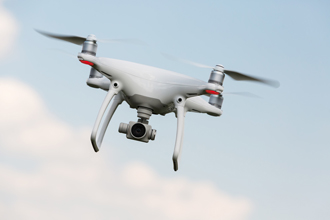Vermont Drone Pilot Training and Part 107 Test Info
Find drone training Vermont plus all the information that you need to get your Remote Pilot Certificate aka Drone License and fly drones commercially. The future is bright for the Unmanned Aircraft System industry as the demand for commercial drone pilots increases.
 On June 21, 2016, the FAA released its long awaited Part 107 to Title 14 of the Code of Federal Regulations (14CFR). These rules allow small unmanned aircraft systems (UAS) which are under 55 lbs to be flown commercially in the National Airspace System. On August 29, 2016 the new Part 107 rules became effective and you are now required to get a Remote Pilot Certificate with a small UAS Rating in order to legally fly drones for commercial or business purposes. To get this certificate, you must PASS the FAA Part 107 Remote Pilot aeronautical knowledge test.
On June 21, 2016, the FAA released its long awaited Part 107 to Title 14 of the Code of Federal Regulations (14CFR). These rules allow small unmanned aircraft systems (UAS) which are under 55 lbs to be flown commercially in the National Airspace System. On August 29, 2016 the new Part 107 rules became effective and you are now required to get a Remote Pilot Certificate with a small UAS Rating in order to legally fly drones for commercial or business purposes. To get this certificate, you must PASS the FAA Part 107 Remote Pilot aeronautical knowledge test.
Click here to find an FAA Part 107 test center location.
Please note: If you already have a Part 61 pilot certificate, you may only be required to take the online training course Part 107 small Unmanned Aircraft Systems (sUAS)ALC-451. All others can use this online course as a practice test.
To apply for your Remote Pilot Certificate aka drone license after passing the Part 107 knowledge test, click through to How Do I Become A Drone Pilot for your next steps.
Part 107 Knowledge Test Study Guide
The Federal Aviation Administration (FAA) has published a free Study Guide to help prepare you to take the Remote Pilot Certificate with an sUAS Rating Airman Knowledge Test. To download your free copy, click here.
Drone Training in Vermont:
The University of Vermont
Burlington, VT
Unmanned Aircraft System (UAS)/Drone Workshop
The Continuing and Distance Education department of UVM is offering a 3-day course for professionals looking to learn about using drones for geospatial analysis. The course includes classroom lectures as well as hands-on work where you will learn how to collect data from drones and turn drone photos into information that can be used for a variety of applications.
UVM’s Spatial Analysis Laboratory Team can put together a custom program for your group or company for training in data analytics, 3D modeling, GIS/CAD integration, flight operations and more.
Looking for drone pilot training in a different state? Check out the map on our drone pilot schools page.
The Spatial Analysis Lab at the University of Vermont has been conducting research using drones for different applications across the state and across the country. They are trying to determine if drones are the best tool for various jobs.
The program was founded in 2013 and their team of drones are equipped with high-resolution still and video cameras with infrared sensors. The data that they collect can then be turned into maps, 3D models of landscapes and infrastructure analysis for engineers and researchers to study.
They have used their drones for studying bridges, monitoring road construction, monitoring crops for farmers, analyzing accident situations for emergency responders.
The Vermont Department of Environmental Conservation is using the drone team to help them control and manage an invasive species of water chestnut that grows in the southern Lake Champlain basin.
This species is very invasive and forms thick mats that makes navigation through the lake very difficult as well as having negative environmental impacts.
The drones can survey the lake taking aerial pictures that can be analyzed to determine the specific areas where volunteers and staff can be sent to pull out the invasive plants.
This is way more efficient than having people go out in kayaks and just paddle around trying to find the areas of dense growth to be pulled out.
Part 107 Highlights:
- You must be at least 16 years old.
- You must hold a Remote Pilot Certificate with a Small UAS Rating or be supervised directly by someone who does have this certificate.
- The drone must not weigh more than 55 lbs including any attached cargo.
- The UAS is not allowed to fly higher than 400 feet above the ground.
- The maximum speed allowed for the drone is 100 mph.
- The UAS needs to always be within the pilot’s line of sight without binoculars.Operation of the UAS is limited to daylight hours and during twilight hours only if the drone has anti-collision lights.
- You are not allowed to fly the drone over people who are not directly involved in the UAS operation.
- If the FAA requests your drone for inspection or testing, it must be made available with all records that are required under the new rule.
- Any UAS operation that causes a serious injury, loss of consciousness or property damage (not to the UAS) of at least $500 must be reported within 10 days to the FAA.
You can read the Summary of Part 107.
Read the complete Small UAS Rule here.
Drone Pilot Training Center is dedicated to providing the information that you need to become a successful drone pilot. Check back for updates at https://www.dronepilottrainingcenter.com for drone pilot license info.
Related Pages:
